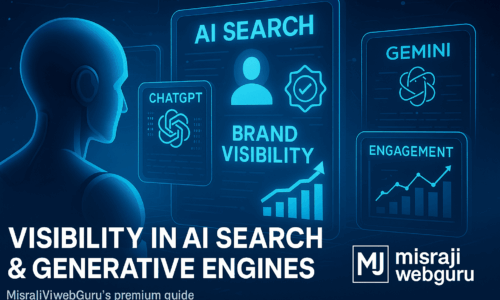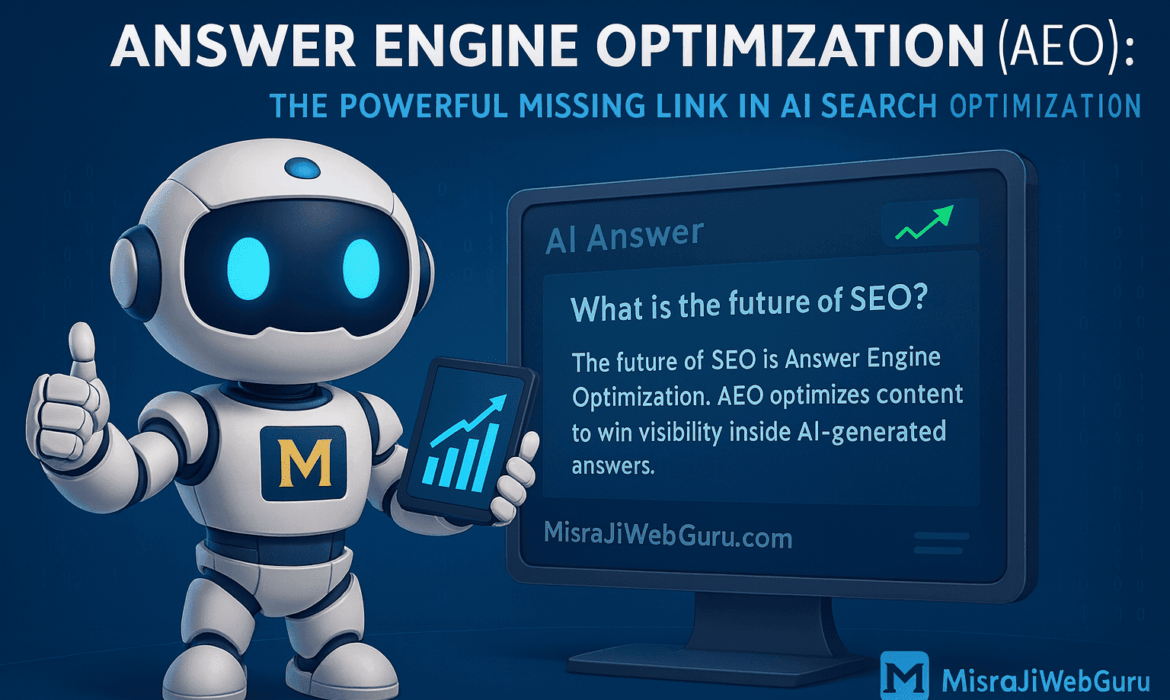
If you’ve noticed your website traffic dipping even though your rankings are stable, you’re not alone. Search is changing—and fast.
Users are no longer clicking through ten blue links. Instead, they’re asking AI engines like ChatGPT, Gemini, and Perplexity questions and getting direct answers, often without visiting a website at all.
That’s where Answer Engine Optimization (AEO) comes in. Think of it as the upgrade to SEO: instead of optimizing just for rankings, you optimize to become the answer. Combined with AI search optimization, AEO is now the difference between being visible—or being invisible—in an AI-first search reality.
Table of Contents
Key Takeaways
- AEO = Optimizing content to appear as the direct answer in AI engines and search overviews.
- AI search optimization ensures your content is structured, authoritative, and machine-readable for LLMs (large language models).
- Ignoring AEO means losing visibility, even with strong rankings.
- Winning in AEO requires E-E-A-T (Expertise, Experience, Authority, Trust), structured data (FAQ & HowTo schema), and topical authority.
- Brands that move early on AEO and AI search optimization gain an edge while competitors scramble to adapt.
What is AEO (Answer Engine Optimization)?
AEO is the practice of optimizing your content so it becomes the answer source in AI engines, voice assistants, and Google’s AI Overviews.
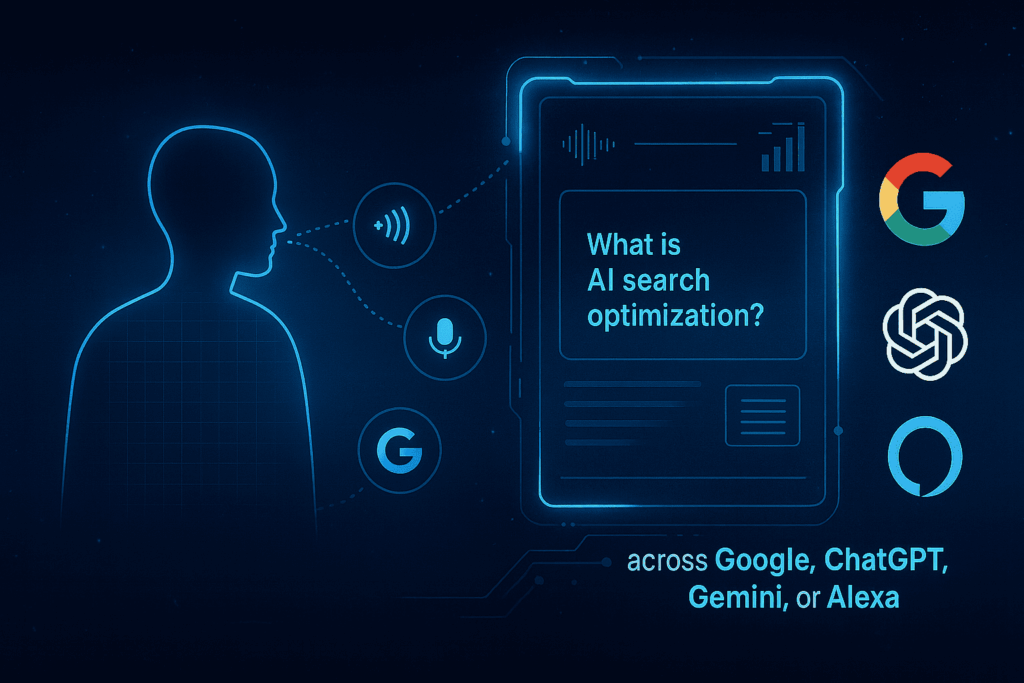
Traditional SEO = Rank in SERPs.
AEO = Get quoted, cited, and surfaced as the final answer.
When a user asks “What is AI search optimization?”, the goal of AEO is for your brand’s content to be the snippet, the reference, or the voice read aloud—across Google, ChatGPT, Gemini, or Alexa.
Why AEO(Answer Engine Optimization) Matters in an AI-First World
The problem with sticking to SEO alone? Zero-click searches.
- Google’s AI Overviews answer questions without requiring a click.
- ChatGPT has over 700M weekly active users, most of whom don’t “search”—they “ask.”
- Perplexity, Gemini, and Claude cite sources directly inside their answers.
If your brand isn’t inside those answers, you’re out of the conversation.
AEO ensures that when AI delivers an answer, it’s your brand that gets cited.
How AEO(Answer Engine Optimization) and AI Search Optimization Work Together
Here’s the relationship:
- AEO: Focuses on optimizing for direct answers.
- AI Search Optimization: Ensures your content is structured and discoverable by LLMs (large language models) and AI search systems.
Together, they create Search Everywhere Optimization—ensuring visibility not just in SERPs, but also in AI chats, voice assistants, app
stores, and social search.
The Pillars of Answer Engine Optimization Success
1. Authoritative Content (E-E-A-T)
AI engines prioritize trustworthy, expert-driven content. To win AEO:
- Cite recent, credible sources.
- Add author bios with expertise credentials.
- Provide examples, case studies, or original data.
Tip: Create a pillar page on “AI search optimization” and link cluster blogs (schema, AEO tactics, AI metrics) back to it. This shows both Google and LLMs that your brand owns the topic.
2. Structured Data & Schema Markup
AI engines love structure. Schema markup helps them parse and cite your content correctly.
Essential schema types for AEO:
- FAQ schema → for common questions.
- HowTo schema → for step-by-step guides.
- Article schema → for thought leadership blogs.
- Product schema → for ecommerce, pricing, and reviews.
Tools like Rank Math make schema implementation simple—and critical for AEO.
3. Conversational and Long-Tail Queries
AI answers mimic human conversation. That means content should target natural-language questions.
Instead of: “AI search optimization guide”
Use: “How do I optimize my brand for AI search engines?”
Practical moves:
- Pull questions from People Also Ask, Reddit, and Quora.
- Use question-based H2s and H3s.
- Expand FAQs with real phrasing your audience uses.
4. Topical Coverage > Keywords
Google and AI engines now reward topic depth over keyword density.
AEO demands that your content be:
- Comprehensive, not thin.
- Covering multiple subtopics within a cluster.
- Internally linked for semantic context.
Example: Don’t just define AEO. Cover how it connects to voice SEO, AI citations, schema, and PR visibility.
5. Digital PR and Backlinks
LLMs trust what the internet trusts. That means strong backlinks and mentions are still essential.
- Publish original research → others will cite you.
- Run digital PR campaigns to get featured in credible media.
- Partner with niche influencers who publish on high-trust platforms.
The more respected sites mention you, the higher the odds AI engines pull you into their answers.
6. Multi-Format Content
AI prefers clarity. Structured, diverse formats give models more “hooks.”
- Use bullet points and numbered steps.
- Include tables for comparisons.
- Add visuals with alt text (infographics, charts).
- Repurpose into short videos, podcasts, and transcripts.
Answer Engine Optimization isn’t about more words—it’s about clearer answers.
7. Tracking AI Citations
You can’t improve what you don’t track.
Ways to measure Answer Engine Optimization (AEO) visibility:
- Ask AI engines questions and see if you’re cited.
- Use tools like Semrush AI Tracking, Ahrefs Brand Radar, or Ubersuggest LLM Beta.
- Monitor branded mentions in ChatGPT, Gemini, and Perplexity.
- Track referral traffic in GA4 from AI-driven search platforms.
This feedback loop tells you where you’re winning—and where competitors are cited instead.
AEO in Action: Practical Playbook
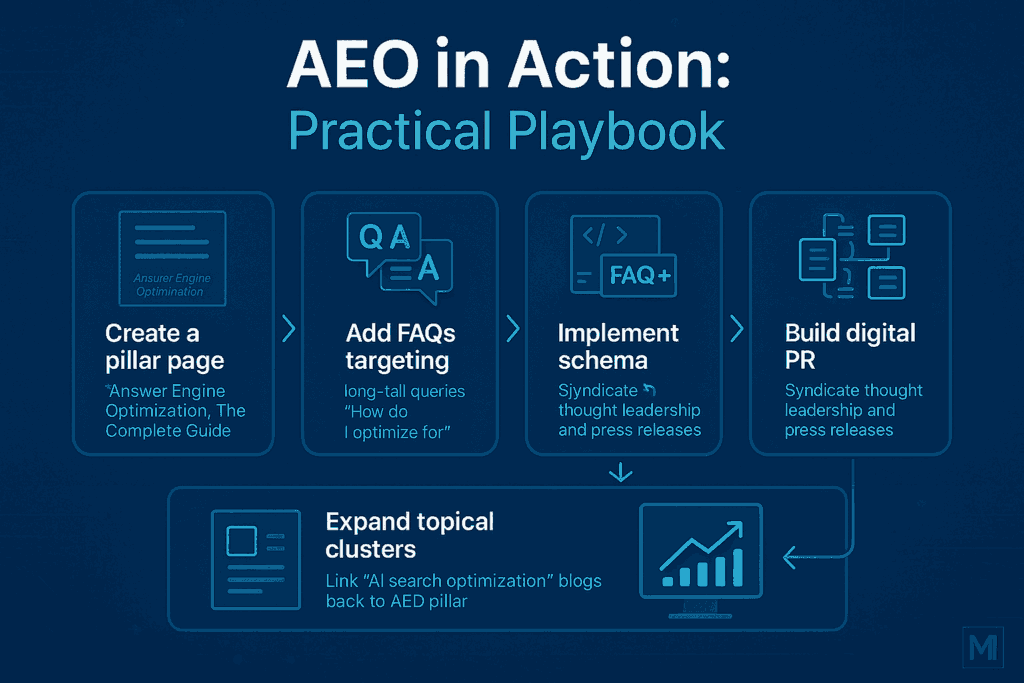
Step 1: Create a pillar page → “Answer Engine Optimization: The Complete Guide”
Step 2: Add FAQs targeting long-tail queries → “How do I optimize for AI Overviews?”
Step 3: Implement schema → FAQ + HowTo markup with Rank Math.
Step 4: Build digital PR → syndicate thought leadership and press releases.
Step 5: Expand topical clusters → link “AI search optimization” blogs back to AEO pillar.
Step 6: Track citations → measure where AI platforms are pulling your content.
FAQs About AEO
Q1. What is Answer Engine Optimization (AEO)?
AEO is the practice of structuring and optimizing content so AI engines and voice assistants cite your brand as the direct answer.
Q2. How is AEO different from SEO?
SEO helps you rank in SERPs. AEO ensures you’re included inside AI-generated answers like ChatGPT, Gemini, and Google’s AI Overviews.
Q3. Does Answer Engine Optimization (AEO) replace SEO?
No—AEO is the evolution of SEO. Both are essential: SEO brings rankings, AEO brings citations inside answers.
Q4. What role does AI search optimization play in AEO?
AI search optimization makes your content machine-readable, structured, and trusted, so LLMs (large language models) include it in their responses.
Q5. How can small businesses benefit from Answer Engine Optimization (AEO)?
By moving early. Few competitors are optimizing for AEO today—giving smaller brands the chance to get cited in AI answers before the market gets crowded.
Conclusion
AI is no longer “the future of search”—it’s the present. If your brand isn’t part of AI answers, you’re already missing opportunities.
That’s why Answer Engine Optimization (AEO) is the missing link in AI search optimization. It ensures your content doesn’t just rank—it gets surfaced, cited, and trusted inside AI experiences.
The playbook is clear:
- Build authoritative, structured content.
- Implement schema and FAQs.
- Expand topic clusters.
- Earn digital PR citations.
- Track your visibility inside AI answers.
Brands that act now will own the AI search conversation. The rest will fade behind the answers.
📌 Next Step: Work With Us
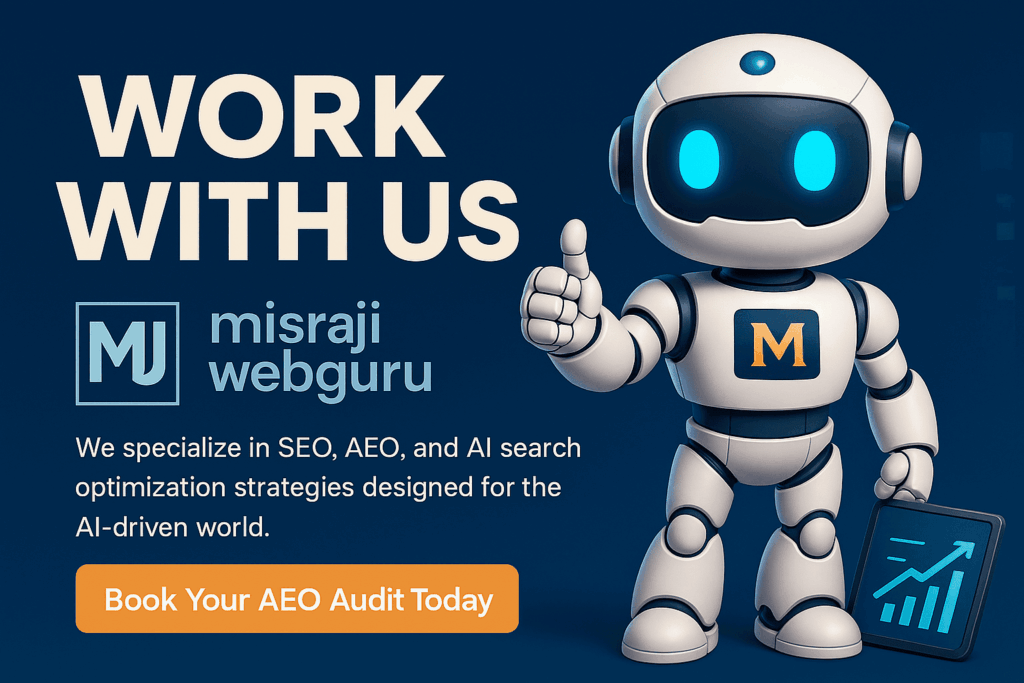
At MisraJiWebGuru, we specialize in SEO, AEO, and AI search optimization strategies designed for the AI-driven world.
👉 Ready to see how visible your brand is in AI answers?

